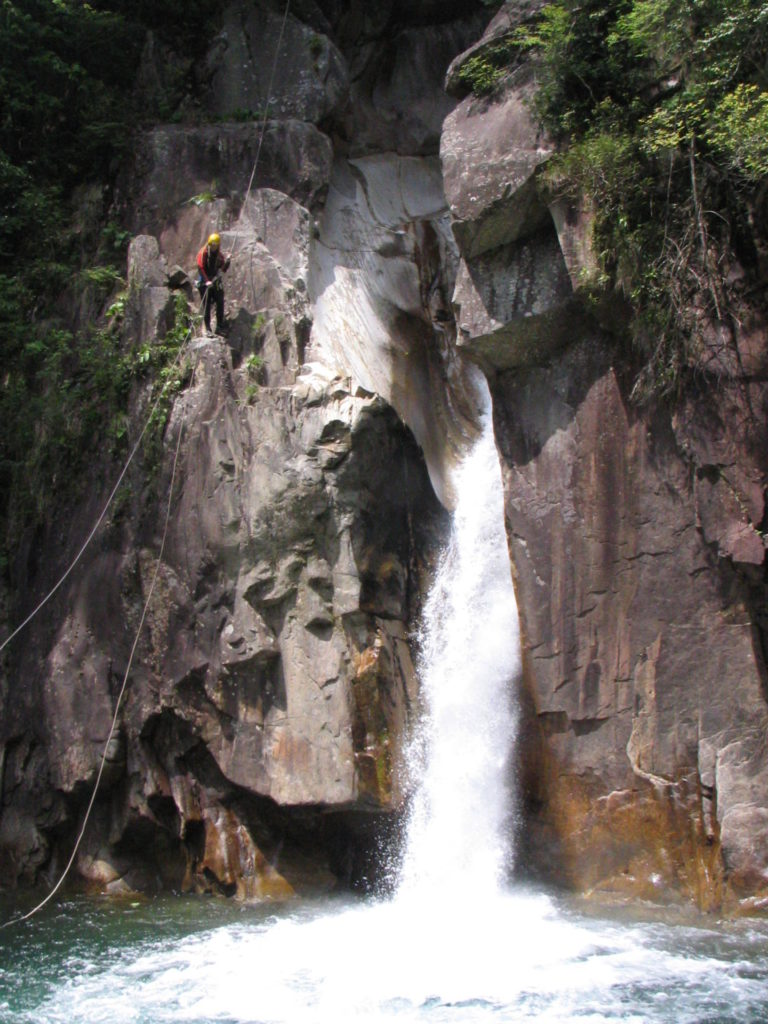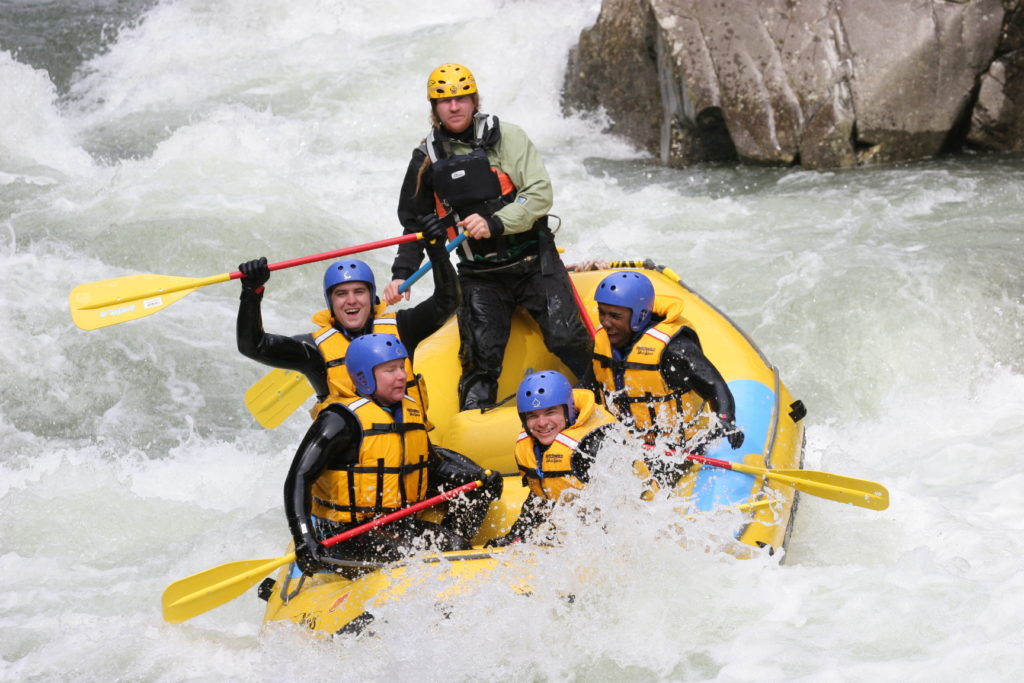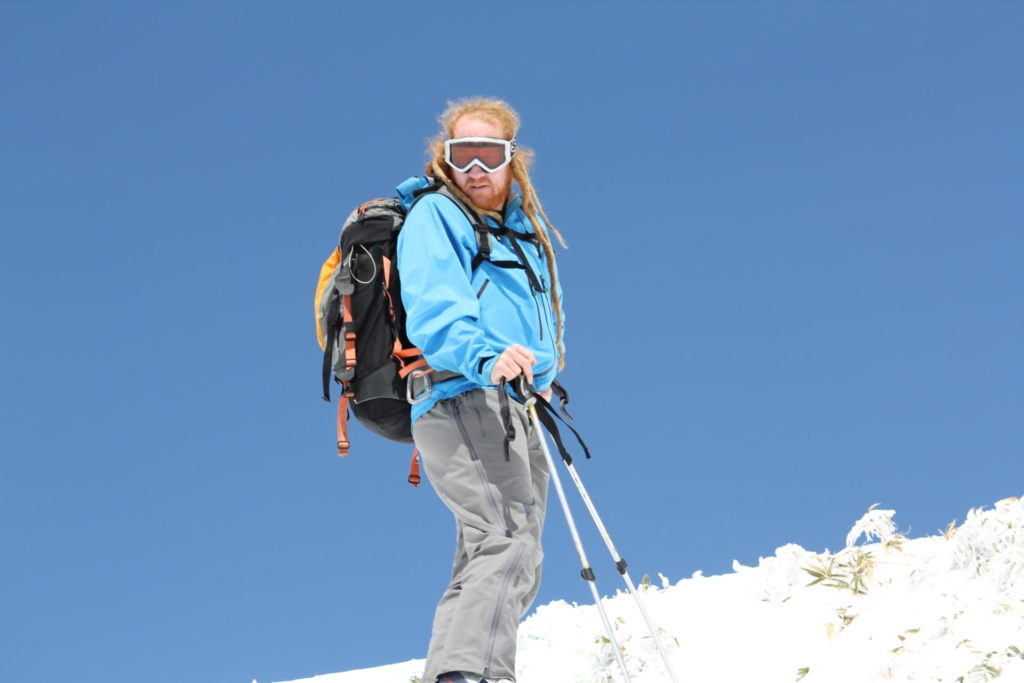
When and how did you first come to Japan?
After studying Japanese for six years in New Zealand (five in high school and one in college), I came to Japan in 1992 with four friends on an exchange program during my university holidays. The “uni” had sorted out a homestay and a job at a gas station in the small township of Fujieda in Shizuoka Prefecture. After three months, I returned to Uni with some useful new vocabulary like, “bodycon, parapara…”
How did you end up in Minakami?
In 1994, I was working on the ski fields of Hakuba. I met up with a Kiwi guy called Chance (well known in snow grooming circles) who told me about Minakami and how a mate of his had just started a rafting company there. At the end of that winter season, I headed for a short stint in Tokyo working in “the Pong” (Roppongi), but I soon realized I was better suited to the mountains. I called up the Kiwi owner and sorted out a meeting in Minakami. As soon as I stepped off the train something felt special about the place and, after a couple of trips rafting down the mighty Tone River, I was sold. Viva Minakami!
What was Minakami like back then?
In my early days (1995—) the town was still riding the end of the “bubble” and relying on its winter seasons and onsen tourism. There were a few foreigners in town but most were weekend warriors who stuck to the confines of Gaijin Mura (Foreigners Village). Needless to say, a six-foot-tall gaijin with red dreadlocks got a few strange looks as I careened down the rapids and through the town.
It was a real battle trying to get the locals to accept adventure tourism. Most were convinced onsen tourism was the only tourism suitable for Minakami as they’d been pampered by large group tours filling the town over the years. Luckily, there were a couple of accommodations that saw the potential of adventure tourism in Minakami, supporting it from the outset.
There were only two rafting companies the first two years; one Kiwi-owned and one owned by three Japanese guys who had worked previously in New Zealand as guides. Both companies had only a few staff members, and we had regular parties together.
During these pioneering days of Tone River rafting, there were few rules and a lot of trial-and-error. Most of the customers were real adventure seekers keen to be the first to try this new sport.

How has Minakami changed over the last decade?
Minakami has started to make the transition from an onsen tourism-dependent town to a multi-faceted four-season adventure town. Adventure tourism is now recognized as a major contributor to the local economy. Today there are more than 30 adventure tourism operators with about 300 staff members who cater to more than 100,000 adventure tourists each year. Customers nowadays are more main stream; mostly 20-to-40 year-old urbanites looking for a refreshing adventure to escape the stress and mendacity of daily life.
The increase in operators has meant some of the old derelict hotels have been refurbished, transforming into base camps for adventure companies. This influx of young workers has breathed some life into the town and has resulted in a more vibrant atmosphere, not to mention an increase in the declining birthrate.
When did you start Canyons and what was the inspiration behind starting your own company here?
I was working in Nepal as an expedition raft guide after already completing more than six seasons in Japan. On days off between tours, I’d explore creeks and canyons with some European canyoning guides. It occurred to me this could be the perfect tour for Minakami to quench the thirst of adrenaline junkies in summer when the water is low for rafting.
I brought my new skill set back to Japan in 1998 and started the first commercial canyoning tours in Minakami. For the first four years I operated the tours out of a garage inside the local company, Uncle Bear. I officially started using the name Canyons in 2000. The popularity of the tours increased exponentially, so I made the move to a dedicated canyoning base in 2002. In 2006, we upgraded from the shanty setup to a full-fledged base facility, taking over an old Bosch (power toolmaker) company holiday facility.
How has business and the industry changed over the past 10 years?
The adventure tourism industry has seen a huge increase in new operators over the past 10 years. This isn’t surprising as there are basically no barriers to entry and zero regulations currently in place for commercial operators.
The large increase in demand from school trips has spawned many new companies in a wide range of geographic areas that only target schools and concentrate on high volume low price tours. Companies targeting regular tourists have also grown quickly as many guides work in a company for a few years, then split off and try to start their own business.
This increase in demand has caused many companies to compromise on safety. Some school trip operators lower guide standards so more guides are available for their tours while some start-up companies targeting regular tourists make compromises to survive the first years in business.
One of Canyons’ keys to success has been the employment of highly trained, qualified guides and instructors. This has allowed us to grow at a steady pace over the past 10 years.
Do you think people’s attitudes about travel and the outdoors in Japan have changed over the last 10 years?
There have definitely been some big changes for both markets. Domestically, I think many younger Japanese are learning they do not have to go overseas to experience world-class adventure and beautiful outdoor scenery. Inbound travelers have discovered there is a lot more to Japan than the “Golden Route” of Tokyo, Hakone and Kyoto
Looking forward, what would you like to see happen over the next 10 years?
I would like to see the introduction of a more sustainable tourism model in Japan, especially focusing on safety, quality, community and ecological preservation. One of the first issues to be addressed should be safety standards; in particular guide licenses and more stringent operational rules. There are way too many cowboys out there. If Japan wants to attract more international tourists, it should conform to international standards.
What does the future hold for Canyons?
My vision is for Canyons to become the leader in sustainable adventure tourism in Japan. We intend to extend our geographical presence and increase the menu of adventures we offer while providing the best experiences possible. We hope to refresh society and give a deeper appreciation for our natural environment.
When you aren’t showing others how to have a great time outdoors, what do you like to do for fun?
I spend most of my days off with my wife and three kids, all of whom love the outdoors; rock climbing, hiking, canyoning, kayaking, hydro speeding, skiing, snowshoeing or anything else we can find. My other passion is music. I love to DJ and organize music events and parties, often inviting artists from overseas (especially New Zealand).





